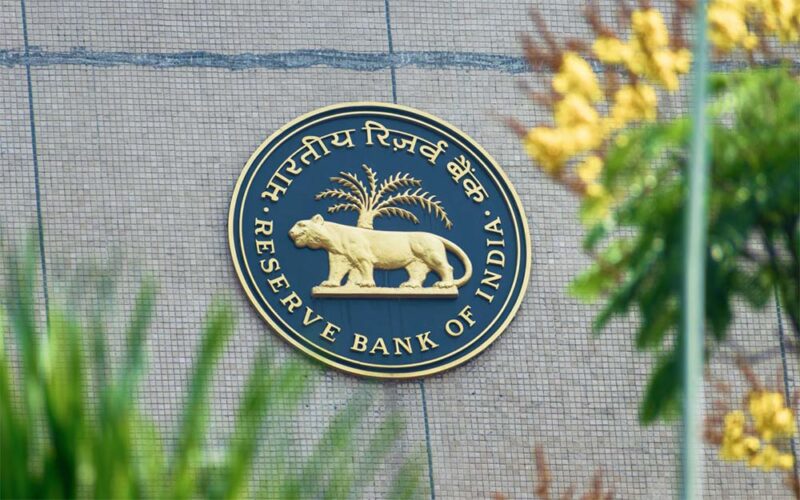RBI’s Historic Rate Cut: Charting India’s Economic Course
The RBI and Its Important Role
India’s Reserve Bank of India (RBI) is like the head teacher of all the banks in the country. Just as he or she makes all the important decisions about rules, exams, and schedules, the RBI makes sure that banks follow the rules, people’s money stays safe, and the economy runs smoothly. One of the most important jobs of the RBI is setting the repo rate. This is the rate at which banks borrow money from the RBI. If the repo rate is high, it becomes expensive for banks to borrow money, so they increase the interest rates on loans. If the repo rate is low, banks can borrow money at a cheaper rate and pass on the benefit to businesses and individuals.
On 7th February 2025, the RBI’s Monetary Policy Committee (MPC) decided to cut the repo rate by 0.25%, bringing it down to 6.25% from 6.5%. This decision was taken to boost India’s economy, make borrowing easier, and keep inflation under control. This essay tries to find out how does this affect us.
Understanding the Repo Rate and Why It Was Cut
The repo rate is the interest rate at which banks borrow money from the Reserve Bank of India (RBI). Think of it like a price banks must pay when they need extra funds. If the repo rate is low, banks can borrow money at a cheaper rate and, in turn, lend it to people and businesses at lower interest rates. This makes it easier for families to buy homes, purchase cars, or start businesses.
Imagine some individuals wanting to take a home loan. If the interest rate is 8%, they would have to pay a large sum every month. However, if the rate is lowered to 7.75%, they would save money on loan repayments. Even a small change in the interest rate can make a big difference, helping people afford what they need.
In February 2025, the RBI decided to reduce the repo rate to 6.25%, marking the first rate cut in five years. This decision was taken to support India’s economic growth. The government estimates that the Indian economy will grow by 6.7% in 2025-26. By lowering the repo rate, the RBI is encouraging businesses to take loans, expand their operations, and create more jobs for people.
Another reason for this decision was to increase spending and investment. When loans become cheaper, more people are likely to borrow money to buy homes, vehicles, and other goods. This helps businesses earn profits and strengthens the economy.
Finally, the repo rate cut was needed to support a slowing economy. In 2024-25, India’s economy grew at 6.4%, the slowest rate in four years. To prevent further slowdown, the RBI reduced the repo rate, ensuring that money keeps flowing in the economy and businesses continue to grow.
What Happens When the Repo Rate is Cut?
One of the biggest advantages of a lower repo rate is that loans become cheaper. When banks can borrow money at a lower rate from the Reserve Bank of India (RBI), they pass on the benefit to people and businesses by reducing interest rates on loans. This is especially helpful for those looking to buy a home, as their monthly instalments (EMIs) become more affordable. Similarly, business owners can take loans to buy equipment, expand factories, and create more jobs. Even students who need education loans for higher studies will benefit, as they will have to pay less interest on their repayments.
When businesses find it easier to borrow money, they grow faster and hire more workers. A factory, for example, may need funds to buy new machines or build a bigger space. With a lower interest rate, it becomes cheaper for the factory to take a loan. As the factory expands, it needs more employees, creating new job opportunities for people. More jobs mean that more people have salaries to spend, increasing demand for products and services, which further boosts the economy.
Another important reason the RBI cut the repo rate is to keep inflation under control. Inflation refers to the increase in prices of everyday goods and services. If inflation is too high, things become too expensive, making it harder for people to buy essential items. On the other hand, if inflation is too low, businesses might struggle to make profits. The RBI aims to keep inflation at a manageable level of 4.2% in 2025-26. The expected inflation rates for different periods of the year are:
- April – June 2025: 4.5%
- July – September 2025: 4.0%
- October – December 2025: 3.8%
- January – March 2026: 4.2%
By ensuring stable inflation, the RBI makes sure that people can afford their needs while businesses continue to grow.
Other Important RBI Decisions in 2025 to Keep India’s Economy Safe and Stable
With more people using online banking and digital wallets, the Reserve Bank of India (RBI) is working hard to protect customers from cyber fraud. As digital payments become more common, there is a higher risk of online scams. To make transactions safer, the RBI has introduced extra verification steps for payments made to international sellers. This means that before completing a purchase, customers may need to confirm their identity in a secure way. Additionally, the RBI has launched special website domains such as “.bank.in” for banks and “.fin.in” for financial institutions. These official domains help people identify genuine banking websites and avoid falling into fraudsters’ traps.
Apart from online security, the RBI also plays a crucial role in managing India’s currency in the global market. The value of the Indian rupee compared to foreign currencies like the US dollar affects the prices of goods imported and exported. If the rupee weakens too much, imported products such as petrol, electronics, and machinery become more expensive, which can increase inflation. However, if the rupee becomes too strong, Indian goods might become more expensive for foreign buyers, reducing exports. The RBI carefully monitors the currency’s value to ensure it remains stable and benefits both Indian consumers and businesses.
India is also affected by changes in the global economy. Recently, the United States introduced new tariffs (extra charges on imported goods), which could impact India’s trade with other countries. Such decisions can make Indian goods more expensive in global markets, affecting businesses. Despite these challenges, RBI Governor Sanjay Malhotra has assured that India’s economy is strong and well-prepared to handle any difficulties. By carefully managing risks and ensuring financial stability, the RBI helps keep the country’s economy safe and growing.
How the RBI’s Decisions Affect Daily Life
The Reserve Bank of India’s (RBI) decisions play a role in our everyday life. One important way is by helping families save money on loans. If somebody’s parents have taken a home loan or car loan, a lower repo rate means they will have to pay less money every month. This allows them to spend more on other household needs, such as their children’s school fees, books, or family outings.
Another way the RBI’s decisions impact people is by keeping inflation under control. Inflation is the rise in prices of goods and services. If prices increase too quickly, the pocket money may not be enough to buy the things people like, such as chocolates, books, or school supplies. By carefully managing inflation, the RBI makes sure that the prices of everyday items do not rise too fast, so that people’s money keeps its value for longer.
The RBI also plays a role in creating better job opportunities for the future. When businesses borrow money easily and expand, they hire more workers. This means that there will be more career options available for a large number of people. Whether one wants to be a doctor, engineer, teacher, or business owner, a strong economy ensures that good jobs will be available.
Lastly, as more people use online banking and digital payments, the RBI is making sure that these transactions remain safe from cyber fraud. By ensuring financial safety and stability, the RBI is making sure that India’s economy remains strong for future generations.
Conclusion
In summary, the RBI’s repo rate cut to 6.25% helps the economy grow, makes borrowing easier, and keeps inflation under control. By improving online security and stabilising the rupee, the RBI ensures India’s financial system stays safe and efficient. Despite global challenges, India remains strong and ready to handle them, ensuring a stable and growing economy for the future.
Subscribe to our Youtube Channel for more Valuable Content – TheStudyias
Download the App to Subscribe to our Courses – Thestudyias
The Source’s Authority and Ownership of the Article is Claimed By THE STUDY IAS BY MANIKANT SINGH




